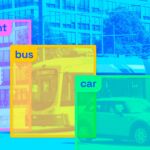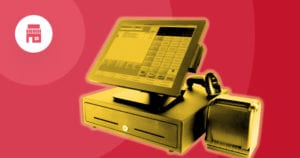
Internet of Things (IoT), at its most basic understanding, is a network of connecting devices embedded with sensors. It allows these devices to communicate, analyze, and share data regarding the physical surrounding world via cloud-based software platforms and other networks.
The sector has had a complete makeover over the last decade driven by technologies such as Machine learning, Artificial Intelligence, and IoT. The latter has already been applied by more than 50% of major retailers worldwide. It continues on an upward trend. Retail IoT applications are in many areas of the industry, including industrial sensors for manufacturing, in-store analysis devices, connectivity systems that merge both online and offline spheres of customer engagement.
Sparklabs has forecasted “an exponential growth in the IoT space—from 2.5 billion devices in 2017 to 5.4 billion in 2020
The Benefits of IoT
Forward-thinking retailers are already reaping the rewards of applying IoT applications successfully. Here are some advantages retail sector gain with IoT applications:
1. Enhanced Supply Chain Management
IoT solutions like RFID tags and GPS sensors can be used by retailers to get a comprehensive picture regarding the movement of goods from manufacturing to when its placed in a store to when a customer buys it. The information gleaned—such as the time spent on transportation, or the temperature at which the product was being stored etc.—can be analyzed in real time. This data proves to be helpful, especially during the transportation of perishable products, where the temperature of storage is crucial. According to some experts, roughly
2. Better Customer Service
IoT also helps brick and mortar retailers by generating insights into customer data while opening opportunities for leveraging that data. For example, retailer IoT applications can synthesize data from video surveillance cameras, mobile devices, and social media websites, allowing merchants better to predict customer behavior.
8 in 10 retail stores have admitted that IoT has improved overall customer experience. Roughly the same number have claimed that it has increased business efficiency.
3. Smarter Inventory Management
Inventory management can be a headache. A lack of accurate tracking for inventory can lead to stock-outs and overstock, costing retailers around the world billions annually. IoT can tackle these issues by automating inventory visibility. By applying smart inventory management solutions based on store shelf sensors, RFID tags, beacons, video monitoring, and digital price tags, retail businesses can enhance procurement planning. When product inventory is low, the system offers to re-order the adequate amount based on the analytics acquired from IoT data.
4. Automated Checkout
Check-out is one operation that is the most labor-intensive and often disliked process for customers. When checkout lines are too long, many people leave without purchasing anything, resulting in lost profit. In order to stop customers from leaving without any purchases, retailers can use IoT solutions to automate point of sale (PoS) systems. Automated PoS can read tags on each product when the customer leaves the store and automatically charge them from a mobile payment app.
Successful Retail IoT Applications
1. Foot-Traffic Monitoring
In a small store, the mall traffic can be examined across several retailers so the entire shopping journey is understood. In a smart store, you can use video-based foot-traffic monitoring to see whether customers dwell in one product area more than others. Then, in real time, you can direct an associate to help out the customer or examine the information later in order to tweak the store layouts for more efficient customer visits. Moreover, by observing the store traffic and customer demand in real-time, you can customize the existing in-store shopping experience.
2. Predictive Equipment Maintenance
Predictive equipment maintenance is used for energy management, estimating equipment failure, and preventing other problems before they occur. For example, every grocery store houses a lot of complex equipment, such as refrigeration units and HVAC systems. When these units are fitted with sensors, you can forecast maintenance issues that may impact the power consumption for savings or even monitor the temperature fluctuations to ensure food safety.
3. Demand Alert Warehouses
Demand-alert warehouse fulfillment is about warehouse automation driven by in-store and online shopping demand. IoT permits you to monitor sales and opportunities in real-time. It even allows you to track missed in-store sales. It’s necessary to note that RFID is a well-tested part of IoT that can be used for more accurate service level optimization and for inventory management. With the power of technology, the warehouse of the future will be an open space in which the automated pallets will self-organize depending on real-time demand.
4. Smart Fulfillment
In retail, moving merchandise more efficiently is a major goal to achieve. IoT can play a crucial part in the maintenance of transport, tracking, and route optimization. Of course, many retailers have been using GPS to track and route goods transportation for years, but with IoT, we’re able to understand with much greater accuracy how close a pallet of merchandise is given to the store.
Challenges and Solutions for Retail IoT Applications
Infrastructure
Most retailers lack the infrastructure and network components that huge volumes of IoT data require. In order for merchants to digitize their retail stores, they would need to have a robust network, cloud solutions, and end-user solutions such as barcode scanners, tablets, and mPOS. All of those things would require considerable investment.
The solution here is that there is no need to overinvest in infrastructure all at once when it comes to implementing a new technology. You can start with small infrastructure changes, e.g. using IoT to manage AC or the lighting, which will bring a more immediate ROI. You can gradually get more sophisticated with your IoT solutions.
Security
Many retailers are wary of the security and privacy issues associated with IoT. These concerns have been amplified by the introduction of GDPR (General Data Protection Regulation). Access to the customer’s data gives retailers various opportunities but at the same time opens the door to cyber attack threats and legal complications.
Retailers should work closely with IoT software developers to make sure that the devices and sensors they use are designed with strong security mechanisms in mind, including basics like secure passwords, as well as more advanced security infrastructure like end-to-end encryption, regular software updates, and an IT infrastructure that actively scans for bugs and vulnerabilities.
Data Management
Carrying out IoT data analysis in a timely and relevant manner represents a huge challenge for retail businesses due to a lack of relevant qualifications and expertise. There isn’t enough technical and analytical skill at hand to gain valuable insights from the huge amount of data collected from IoT.
Retail businesses can hire domain experts or depend on third parties with the relevant IoT qualifications and training, who can take over data management processes. By forestalling those challenges, retailers get a chance to make their IoT investment profitable while gaining a competitive edge in the market.
Conclusion
Implementing IoT solutions can deliver valuable insights to retailers. Such solutions can facilitate streamlined customer experiences while amplifying profits. With typical IoT solutions, retailers are digitizing brick-and-mortar stores, which can have an immense ROI from improved efficiency in the supply chain, increased marketing conversions, and more. Consequently, it’s clear that IoT-enabled technologies have the power to improve customer experience as well as increased brand loyalty.





 Related Podcast Episode
Related Podcast Episode




 Related Applications
Related Applications


 Latest IoT News
Latest IoT News







